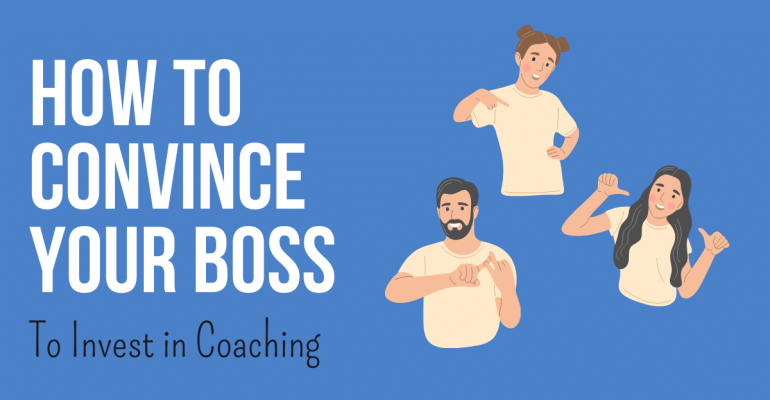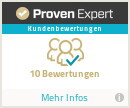How to Convince Your Boss to Invest in Coaching
23. February 2023 2023-09-28 12:15How to Convince Your Boss to Invest in Coaching
Are you a UX designer looking to take your skills to the next level? A UX coach can provide personalized guidance and feedback to help you reach your full potential. However, it can be a challenge to convince your boss of the benefits of coaching.
Drawing on my experience as a UX Coach, I’ll show you how to confidently approach the conversation, make a compelling case for coaching, address common objections and convince your boss. With the right approach, by highlighting the benefits of coaching for you and your company, you can gain your boss’s support for your professional development and take your UX design skills to the next level. Let’s dive in!
Highlight the Benefits of Coaching
When improving your UX design skills, there’s no substitute for personalized feedback and guidance from an expert. A UX coach can help you identify your strengths and weaknesses, offer specific recommendations for improvement, and provide support and encouragement.
Some of the specific benefits of coaching you should know to convince your boss include:
- Personalized feedback: A coach can provide feedback tailored to your specific needs and goals, helping you make the most of your strengths and address your areas of weakness.
- Skill development: Coaching can help you develop specific skills or knowledge areas essential to your job or career goals.
- Access to industry knowledge: A coach can provide valuable insights into current trends, best practices, and emerging technologies in the UX field.
- Improved confidence: As you work with a coach to improve your skills, you’ll likely feel more confident in your abilities and better equipped to take on new challenges.
- Enhanced job performance: By improving your skills and knowledge, you’ll be better equipped to excel in your current role and take on new responsibilities.
- Improved productivity: As a UX designer, you play a crucial role in ensuring that the company’s products or services meet the needs and expectations of the target audience. By investing in coaching for you, your boss can expect immediate improvement in your productivity and efficiency, which can ultimately benefit the company’s bottom line.
- Increased customer satisfaction: With the right skills and knowledge, you can create designs that effectively resonate with your target audience and meet their needs. This can lead to increased customer satisfaction and loyalty, which is critical for the long-term success of any business.
- Better collaboration and teamwork: Through coaching, you can learn new techniques and approaches to work more effectively with other team members, such as developers, project managers, and other stakeholders, which can result in better collaboration and teamwork and thus help the company achieve its goals more efficiently.
- Competitive advantage: By investing in coaching for its UX designers, the company can stay ahead of the curve and gain a competitive advantage over other companies in the same industry. This can be particularly important in sectors where user experience is a key differentiator.
Of course, these benefits may not be immediately apparent, so it’s essential to be able to explain them in a clear, compelling way to convince your boss. In the next section, we’ll look at some common objections to investing in coaching and how to address them.
Address Common Objections
When it comes to investing in coaching, bosses may have several objections. Some common ones include:
- It’s too expensive: Coaching can be an investment, but it’s essential to consider the long-term benefits. By improving your skills and knowledge, you can take on new responsibilities or contribute to the company in new ways, ultimately leading to increased revenue or cost savings.
- We don’t have the time: While coaching does require some time commitment, it’s important to remember that the benefits can be significant. Additionally, coaching can be structured in a way that works for you and your boss, such as scheduling sessions during non-peak times or using online coaching platforms to reduce travel time.
- We already provide training: While many companies offer training programs, coaching offers a more personalized and targeted approach. Coaching can help you address specific challenges or opportunities outside a broader training program.
- It’s not a priority: While coaching may not be the top priority for your boss, it’s essential to explain how it can support the company’s broader business objectives. For instance, by improving the user experience, companies can boost customer satisfaction and drive revenue.
To be able to convince your boss and address these objections, it’s crucial to be prepared with specific examples and data that demonstrate the value of coaching. For instance, you could share success stories and quantify the potential return on investment of coaching.
Share Success Stories
Share success stories from other companies or individuals who have invested in coaching and seen measurable improvements in their skills and job performance to convince your boss. Those reports must, of course, be genuine and ideally also from the immediate environment. But to understand what such stories might look like, here are a few examples.
- The UX design team struggled with high turnover and low morale at Company X. They decided to invest in coaching to help improve their skills and job satisfaction. After just a few months of coaching, the team reported a 30% increase in job satisfaction and a 50% reduction in turnover. Additionally, the team’s designs received higher praise from users and stakeholders alike.
- John, a UX designer at Company Y, needed help to keep up with the demands of his job. He decided to invest in coaching to help him improve his skills and work more efficiently. After just a few coaching sessions, John could complete his projects 20% faster and with higher quality. His boss was so impressed with the results that he decided to invest in coaching for the entire design team.
- Sarah, a UX designer at Company Z, had trouble getting stakeholders’ buy-in on her designs. She hired a coach to help her improve her communication and collaboration skills. After a few coaching sessions, Sarah was able to present her designs more effectively and get more support from her stakeholders. As a result, her designs were implemented more quickly and with greater success.
To convince your boss, showing them the tangible benefits of coaching and how it can lead to improved job performance and business outcomes is crucial. Sharing stories like these can help you with this.
Quantify the ROI
Some bosses need numbers. So quantifying the potential return on investment by estimating the cost savings or revenue increases resulting from improved job performance could be a good idea to convince your boss.
- Increased efficiency: Through UX coaching, you learn new skills and improve your existing skills, which can lead to increased efficiency in your work. For example, you may learn new design techniques, become more proficient with design tools, or learn how to collaborate better with team members. This increased efficiency will lead to time savings, which can be quantified by estimating the amount of time saved and multiplying it by your hourly rate.
- Improved user satisfaction: Through UX coaching, you learn how to design interfaces that better meet user needs and preferences, leading to improved user satisfaction. This can be measured through user surveys or feedback and quantified by estimating the potential increase in user retention or acquisition. For example, if a designer’s improved work leads to a 5% increase in user retention, and the company has 10,000 active users with an average lifetime value of $100, the potential revenue increase would be $50,000.
- Reduced error rates: Through UX coaching, you learn how to avoid common mistakes or design errors, leading to reduced error rates. This can be quantified by estimating the potential cost savings resulting from reduced support requests or bug fixes. For instance, if a designer’s improved work leads to a 10% reduction in support requests, and the average cost per support request is $50, the potential cost savings would be $5,000.
By addressing your boss’s objections clearly, empathetically, and in their terminology, you can help them understand the value of coaching and get on board with your professional development.
It’s essential to approach this conversation in a way that’s authentic and transparent. Explain why you believe coaching is important to your professional development and how it could benefit the company. Be prepared to listen to your boss’s perspective and concerns, and be open to discussing alternative solutions if coaching isn’t feasible.
If your boss is still hesitant to invest in coaching, starting with a smaller investment, such as a one-off coaching session or a trial period of coaching, may be helpful. This can allow your boss to see the benefits of coaching firsthand and may help build support for a longer-term coaching program.
Conclusion
In conclusion, investing in coaching is an investment in your professional development and your company’s success. While getting your boss on board with coaching can be challenging, there are many ways to make a case for coaching.
By highlighting the benefits of coaching, addressing common objections, and showing how coaching aligns with business goals, you can make a compelling case for investing in your professional development and convince your boss. If you’re ready to take your UX design skills to the next level and convince your boss to invest in your professional development, consider booking a discovery session with me. I can help you develop a personalized coaching plan that aligns with your goals and your company’s objectives.
Don’t be afraid to talk to your boss and share your vision for how coaching can benefit you and the company. If needed, offer to connect your boss with me to discuss the specifics of the coaching program and address any questions or concerns. With your boss’s support and a skilled coach’s guidance, you can take your UX design skills to the next level and contribute to your company’s success. So take the initiative and make the case for UX coaching today!
Further Reading
CoachHub (n.d.). Uncover the benefits of coaching. https://www.coachhub.com/en/roi-of-coaching/
UXPin (n.d.). Design ROI – How to Calculate the Value of Design Investments? https://www.uxpin.com/studio/blog/design-roi-calculations/








